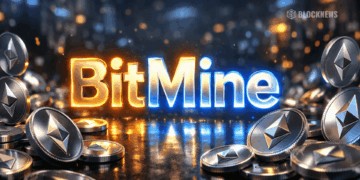Avalanche is an EVM-compatible, proof-of-stake layer one blockchain, ranked sixth in
this category, by market cap. Its ultimate aim is to compete with Ethereum and improve
on its current scalability challenges. The founders of Ava Labs, who launched the
Avalanche platform are ex-professors Emin Gun Sirer, Kevin Sekniqi, and Maofan Yin. All
three share ties to Cornell University and the computer science field.
AVAX
AVAX is the Avalanche blockchain’s native coin, currently ranked in the thirteenth place
of all crypto coins, with a marketcap of approximately $7.9 billion. AVAX has the same
function on the Avalanche C-Chain, that ETH has on Ethereum. With AVAX one can
create or call a smart contract and pay transaction fees. It can also be sent to smart
contracts using EVM tools. Its all time high was that of $144.96, reached in November
AVAX can be staked while earning rewards. At the moment, there are 265, 539,
992 AVAX staked.
The Avalanche Network
The network went live on mainnet in September 2020, and currently has a $2.23 billion
total value locked (TVL), beaten only by Ethereum, Tron, and BSC. Avalanche features three built-in blockchains, namely the Exchange Chain (X-Chain), the Platform Chain (P-Chain) and the Contract Chain (C-Chain). All three are validated and secured by the primary Avalanche Network.
Avalanche is considered to be a network of networks, and all members of all custom subnets must be members of the Avalanche primary network and stake at least 2,000 AVAX. A Subnet or subnetwork is a dynamic set of validators working together to achieve consensus on the state of a set of blockchains, which have their economics and rules. Chains within a subnet automatically share interoperability, however, bridges
handle interoperability between various subnets.
This design allows for scalability, higher transactions per second (TPS), and lower costs. The validators validating the subnets, simultaneously validate the main network (X-Chain, C-Chain and P-Chain). Unlike Polkadot, Avalanche has the capacity for infinite subnets since it does not share security for each subnet. As of writing, there are currently, 27 subnets and 20 blockchains, and this information is available anytime on the Avalanche explorer.
The three chains have their own specific roles, namely:
- X-Chain’s main purpose is to send and receive funds. It can process around 4,500 transactions per second (TPS).
- The C-Chain is where EVM contracts and smart contracts are executed. This is the chain that powers DeFi.
- The P-Chain is the metadata blockchain that handles validators, subnets, and the creation of new subnets. It can process roughly 1,500 TPS.
The network boasts of having the fastest smart contracts platform as measured by time-to-finality, and has 1266 validators securing activity on any protocol. Finality is the amount of time it takes for a guarantee that a crypto transaction is final and cannot be reversed or changed. On the Avalanche blockchain, this happens in less than 2 seconds. The only other blockchain which competes is Fantom, with its 1 to 2-second finality. By comparison, the finality on Ethereum is just over one minute. Therefore, Ethereum Dapps can run on the Avalanche chain, utilizing Avalanche’s time-to-finality. This appears to be Avalanche’s strongest selling point.
Ecosystem
Avalanche has a rich ecosystem that includes DeFi, DOAs, DEXs, play-to-earn games, news, yield farms, tools, CEXs, bridges, NFTs, launchpads, and more. 46.25% of that TVL is located within the AAVE liquidity protocol, with Benqi another liquidity protocol, and Trader Joe (DEX) trailing behind.
In January 2022, Avalanche partnered up with Terra through a token swap. The Avalanche Foundation bought around $200 million worth of Luna and UST coins, and Terra received the equivalent in AVAX coins. Unfortunately, due to Terra’s demise, Avalanche lost all of that money’s worth, an amount which Gun Sirer said will not pose economic challenges for the network. However, this has pushed the AVAX price down quite substantially and doubts remain as to when and how the AVAX bought and still held by the Luna Foundation, will be used.
The Present and the Future
Unfortunately, there seems to be no public roadmap for the project for the upcoming year, therefore information must be gathered from medium articles and updates by Gun Sirer. Putting the Terra incident aside, Avalanche seems to have further growth projections and has recently announced a $290 million Multiverse subnet incentive program to support amongst others, blockchain gaming, DeFi, NFT, and institutional use cases. Other funds such as the Culture Catalyst fund, the Blizzard Ecosystem Fund and EVM subnet development seems to have led to continued growth, the stabilization of network usage, good financial performance, and network infrastructure, in Q1 2022. Improving user experience through the launch of the Core wallet and the native Bitcoin
support on Avalanche Bridge, continued expanding the network in Q2, 2022.
Can Avalanche sustain the ‘Ethereum killer’ race? Perhaps the end of the current bear market will eventually reveal who the winners in the smart contract platform race are. Research by Messari seems to indicate that Ethereum, BNB, and Polygon have higher use and capital retention rates. However, continued success and development of the subnets and interoperability will play an important role in expanding the network.














